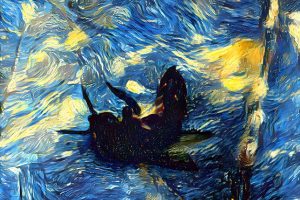The notion of being left or right brained is something that has been accepted by the general populous as fact, a fact with no sound basis; left or right brained was a misconception spread from the work of Roger Sperry, a renowned neuroscientist at the California Institute of Technology. SperryÔÇÖs work with epilepsy sufferers involved bisecting their brains, something that alleviated the sufferersÔÇÖ symptoms. This suggested regions of the brain have distinct roles however the observations were flawed.
Thinking of the brain as two halves gives the impression of making sense but the brain does not work in discrete areas, but as a whole; all parts combine to make you, you. Modern psychologists and neuroscientists now know better with new research being published early next year proposing a new idea ÔÇô being top or bottom brained.
This new theory of consciousness is emerging from the study of higher cognitive functions such as thoughts, wishes and hope which are located in the cerebral cortex. This is the outermost layer of the brain and is deemed the theory of cognitive modes. This approach has remained in scientific circles but is gradually trickling down to laymen and helps explain the behaviours of a diverse set of people from Tiger Woods to the Dalai Lama.
This research indicates that the top/bottom split results in the observation that the top-brain system uses information about the surrounding environment. It combines this information with emotional reactions like hunger and thirst to produce a bigger picture of what goals it wants to achieve. The top is actively formulating plans and expectations about what should happen and tries to complete these goals, reformulating when things donÔÇÖt go as planned.
The bottom-brain system is involved in the organisation of signals from the senses, comparing the information it is receiving with information stored in memory. Once the brain has the required information, it uses it to classify and interpret the environment around you, allowing us to attribute meaning to everyday objects.
These two systems are constantly working together, just like the brainÔÇÖs hemispheres. The tug of war mentality doesnÔÇÖt make sense; if one side of the brain was trying for dominance over the other, this would have led to a poor evolutionary tactic. A better metaphor would be comparing the brain to a car engine, with each individual part ÔÇô the cylinder, fuel injection system and drive chain working together to form a whole.
What is key to this new theory is that each part of the top/bottom system isnÔÇÖt used to an equal degree. Extending the car metaphor, not every car is the same and in high performance engines, the secondary systems such as turbo charger, are not used at all times. As a real life example, you may be hungry but you donÔÇÖt just go to the nearest restaurant ÔÇô the top/bottom system compares memories of previous restaurants youÔÇÖve been to, how they made you feel and then allows you to formulate a plan on how to go to the restaurant of your choice.
This asymmetry leads to four different sets of people ÔÇô movers, who are master strategists with top/bottom systems highly utilised; Perceivers who try to reason and make sense of what they perceive by having a highly active bottom system; Stimulators who have a highly active top system who are master strategists and planners. Finally there are the adopters, people who donÔÇÖt have highly used top or bottom systems. These people require immediate satisfaction and rely on the moment, not plans for the future.
No one mode is better than the other but each mode is useful in different situations, contributing useful actions to a wide range of daily experiences.
Francesca Jones





Add Comment